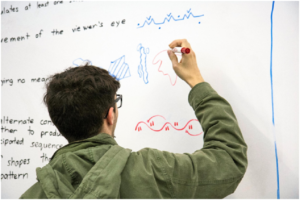Research reveals that when play activities are changed to fit how autistic children learn, 8 out of 10 kids show better social skills. In fact, creative play for autistic childrenis not just for fun, it can be life-changing!
For most kids, play comes naturally. They dive into games, make-believe, and social interactions without a second thought. But for autistic preschoolers, these same activities can feel confusing or overwhelming. So, as a teacher, you can apply a few simple yet creative tweaks to let play become their superpower!
Why Creative Play Matters for Autistic Preschoolers
Think of play as a secret language that helps autistic children develop key life skills in a way that clicks with their unique minds. Because autistic kids often learn differently, the right play setup can make all the difference.
The benefits include:
- Builds Friendship Skills
Simple games like rolling a ball back and forth help kids connect with others at their own pace.
- Improves Communication
When words are hard, puppets, pictures, and storytelling give kids new ways to share their thoughts and feelings.
- Helps with Big Feelings
Sensory-friendly play gives children tools to stay calm and manage anxiety.
- Sharpens Thinking Skills
Pattern games, puzzles, and cause-and-effect toys make learning fun and natural.
Want to see these benefits in action? Let’s look at how to create play spaces that truly work for autistic children!
Simple Creative Play Strategies That Work
The right play environment can turn what might be scary or confusing into something exciting and rewarding.
Here are easy ways to make playtime fun and helpful for autistic preschoolers in your classroom:
- Designing a Play Space That Feels Right
Many autistic children experience the world differently through their senses. Lights might seem too bright, sounds too loud, or certain textures might feel uncomfortable. A thoughtfully designed play area can make all the difference.
If you are confused how to set up a play space like that, do the following:
- Keep it clean and simple. A tidy, organized space helps children focus on play instead of getting distracted.
- Think about lighting and sound. Soft lighting and quiet corners give kids a break when things get too much.
- Add texture stations. Things like water beads, soft fabrics, and kinetic sand let kids explore with their hands.
- Use picture guides. Photos showing what happens during playtime help kids understand what’s coming next.
Now that your play space is ready, let’s look at activities that help build those all-important social skills.
- Play Activities That Build Connections
Teachers who have completed Online SEN courses in Hong Kong understand that autistic children often do best with clear rules and steps. While open-ended play might work for some kids, having structure builds confidence and makes joining in easier.
Here are the top play activities your autistic students will love:
- Simple back-and-forth games that include rolling a ball to each other or pushing buttons that light up, teaching the joy of taking turns.
- Puppet play with puppets that makes talking and sharing feelings easier when a direct conversation feels too hard.
- Get moving games involving stepping stones, balance beams, or simple obstacle courses, making learning physical skills fun.
- Side-by-side play that lets kids play near each other before expecting them to play together.
These structured activities are just the beginning. Let’s explore how to spark creativity without causing overwhelm!
- Nurturing Creativity in Ways That Feel Good
Creativity looks different for everyone! For autistic children, it might not mean painting pictures or pretending to be pirates. It might show up as lining up toys, exploring how things feel, or finding patterns. The key is to value their unique interests while gently expanding their play options.
As a SEN teacher, make room for clarity:
- Try painting with different tools, squishing clay, or using textured materials to create.
- Tablet apps and interactive screens can help kids tell stories when words are tricky.
- Instead of saying ‘Make whatever you want,’ try ‘Let’s make a pattern with these blocks.’
As creativity grows, so does the ability to connect with others. Let’s look at how to help autistic children play with their classmates!
- Helping Children Play Together
Many autistic children find social situations challenging. Understanding unwritten rules, reading facial expressions, and knowing when to take turns do not always come naturally.
Some simple ways to support social play are:
- Partner up. Match an autistic child with a kind, patient classmate for small group activities.
- Choose games with clear rules. Activities like ‘Simon Says’ or ‘Duck, Duck, Goose’ have steps everyone can follow.
- Watch and build. Notice what the child enjoys doing alone, then gradually add social elements to those activities.
The right adult support makes all the difference in helping play succeed. Here’s how you can guide without taking over!
- Your Role in Making Play Work
As a SEN teacher, you do not need to force play to happen. Your job is to create the right conditions and offer gentle guidance. The goal is to make play inviting, not overwhelming.
You can:
- Guide from the side. Set things up, then let children explore at their own speed instead of directing every move.
- Notice the good stuff. A remark like ‘I love how you stacked those blocks!’ goes a long way in building confidence.
- Be ready to shift gears. If a child seems stressed, try changing one part of the activity instead of stopping completely.
With these approaches, you’ll see play become more joyful for every child in your care.
Bottom Line
Preschool teachers who have completed Online Special Education Courses in Hong Kong know the importance of creative play for autistic children. Every child deserves a play experience that feels safe, engaging, and enjoyable. So start today. Observe, adapt, and create play experiences that truly support autistic learners. Because when play feels right, every child gets a chance to shine.



